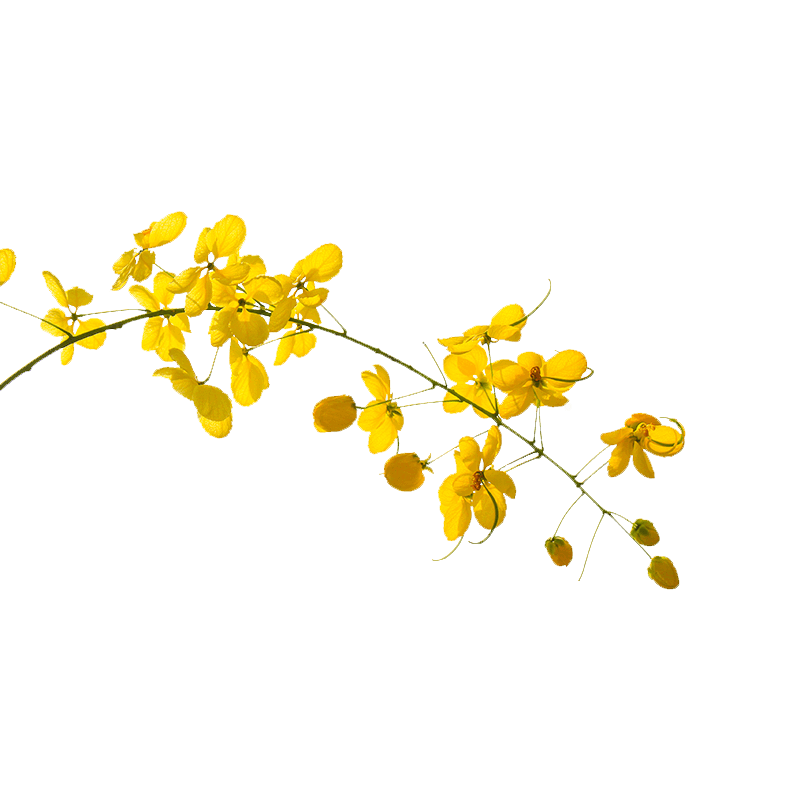Latin name
Cassia fistula L.
Origin
Golden Shower Tree originates in South Asia and Sri Lanka. This plant is now found in all tropical and subtropical regions.
Used part
The leaves.
Active components
Fibres (mucilage, pectin): these contribute to intestinal transit by acting as a binding agent. Anthraquinones: substances that, through contact, stimulate the peristalsis of the intestines and reduce the absorption of water through the intestinal wall. This makes the stools softer and facilitates intestinal transit.
Usage
The plant is appreciated for its decorative value. It is often planted in gardens and along the roadside. In India, the bark of the tree is often used as a tanning agent. The reddish wood is hard, heavy, strong and durable, and its suitable for all types of carpentry. The leaves and the fruit are traditionally used for their gentle stimulating effect on the intestines. In Ayurvedic medicine, the tree is called “aragvadha” which means: “disease killer” and indicates the fact that this plant treats a variety of diseases. Golden Shower Tree can be used to stimulate gastrointestinal health and to facilitate the intestinal transit naturally.

